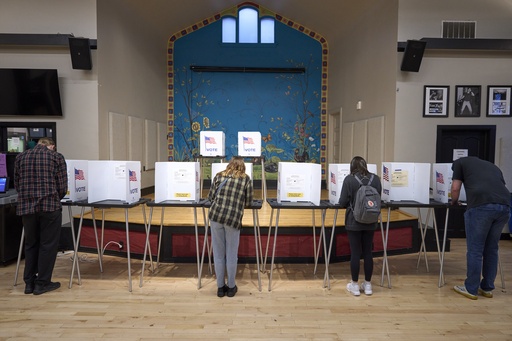
In Washington, the decision was made that Donald Trump, the Republican candidate, has secured victory in Wisconsin, effectively marking his return to the presidency. This conclusion was reached after analyzing that the remaining votes, particularly from the Milwaukee area, would not suffice for Vice President Kamala Harris to close the gap against Trump.
As nearly all votes were tallied on Wednesday morning, the announcement came at 5:34 a.m. ET, officially awarding Trump Wisconsin’s 10 electoral votes, thus enabling him to surpass the critical 270 electoral vote threshold required to regain the presidency.
Harris’ most direct route to victory rested on winning not only Wisconsin but also Michigan and Pennsylvania. However, the AP had already called Pennsylvania in favor of Trump at 2:24 a.m. ET, leaving Michigan’s outcome pending when Wisconsin’s results were finalized.
Leading up to the declaration, numerous uncounted ballots were still outstanding, primarily in Milwaukee and Racine counties. In order for Harris to achieve a comeback, she would have needed a substantial majority from these remaining votes. Given Milwaukee County’s strong Democratic leaning, this scenario appeared plausible. Conversely, while Racine County typically supports Republicans, there have been trends of late-reporting votes skewing towards Democrats.
After further vote updates from Racine, it became evident that while Harris received a boost, it wasn’t sufficiently substantial to surpass Trump, even when factoring in additional votes from Milwaukee County.
The Associated Press only announces victories once it can confidently assert that a trailing candidate cannot close the gap to surpass the leader.
The candidates in the race were as follows: Kamala Harris (Democrat), Donald Trump (Republican), Randall Terry (Constitution Party), Chase Oliver (Libertarian), Jill Stein (Green Party), Claudia De la Cruz (Party for Socialism and Liberation), Cornel West (Justice for All), and Robert F. Kennedy Jr. (We the People).
The polls closed at 9 p.m. ET. Wisconsin was regarded as one of the vital states in the Midwest’s “blue wall,” having supported Trump in 2016 and President Biden in the 2020 election. The state remained a competitive presidential battleground as of 2024. Throughout the campaign, both Trump and Harris, along with their running mates, made numerous visits to Wisconsin, focusing heavily on populous areas like Milwaukee, Madison, and Green Bay. Notably, recent elections had margins of victory less than one percentage point during 2000, 2004, 2016, and 2020.
Back in 2016, Hillary Clinton, the Democratic candidate, encountered defeat even after winning in Milwaukee County with 66% of the votes, 71% in Dane County, which includes Madison, and 52% in LaCrosse. In 2020, Joe Biden improved on Clinton’s results in those areas by 3 to 5 percentage points, contributing to his narrow statewide victory. Trump had won Brown County, home to Green Bay, by approximately 52% in both 2016 and 2020, and Biden managed to enhance his performance there by around 4 percentage points.
For Republican candidates aiming for a solid showing, securing victories in the conservative “WOW” counties located in suburban Milwaukee—namely Waukesha, Ozaukee, and Washington—can significantly help offset the substantial Democratic support found in Milwaukee and Dane counties.
The race was called for Trump not just due to the situation in Racine, but also because he led comfortably in other regions that constitute the staunchest Republican strongholds in the southeastern part of the state. In addition to Racine, Trump’s advantage extended over the “WOW” counties, excluding Milwaukee County itself. His leads were also pronounced in northeastern Wisconsin, particularly in Brown County and the Republican-aligned counties surrounding it.
Throughout the race, Harris consistently lagged behind Biden’s 2020 outcomes across all geographic areas and demographics, from the most Trump-supportive regions to those that supported Biden heavily.
